Case Studies
To the right you can see the different case studies that we have been involved with.
Download the BTB Exhausts brochure
Download the Tube Bend Tool Chart
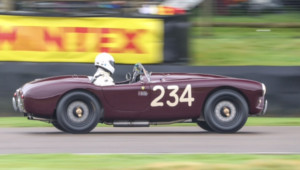 Comment from AC Ace owner, Mark Aldridge:
Comment from AC Ace owner, Mark Aldridge:
“The car had been subjected to a total rebuild which overran time-wise and ended up putting BTB
Exhausts in a position where they had to do a week's work over a weekend in order to get the car on
the grid at the Goodwood Revival.
The result was absolutely superb - it not only looked fantastic, but the 'quiet silencer' at 92db proved
to be well below the 105db limit. However, the most exciting thing is that the torque curve generated
by the special internal 2-1-2 design is significantly better throughout the rev range than that produced
on the engine builder's own dyno using a tuned laboratory exhaust system.
I am totally delighted with the result and I intend to return to BTB for some suggested refinements to
the exhaust ahead of our planned entry to the Mille Miglia later this year.”
Download the AC Ace Case Study
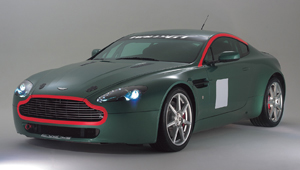 Whether you have a pre war Ulster or the latest V8 Vantage,
BTB have the ability to tailor the perfect exhaust to compliment
this most British of marques. Nothing beats the crisp sound of an
Aston being cracked open on a misty morning to stir the heart of
any sports car enthusiast. All Aston Martins are conceived with
the spirit of competition in their blood and like any thoroughbred
only the right ingredients will bring out the best in the breeding.
A BTB exhaust will give you the edge to stay a nose ahead of the
competition. The Featured car is the exciting Aston Martin V8 rally car.
Whether you have a pre war Ulster or the latest V8 Vantage,
BTB have the ability to tailor the perfect exhaust to compliment
this most British of marques. Nothing beats the crisp sound of an
Aston being cracked open on a misty morning to stir the heart of
any sports car enthusiast. All Aston Martins are conceived with
the spirit of competition in their blood and like any thoroughbred
only the right ingredients will bring out the best in the breeding.
A BTB exhaust will give you the edge to stay a nose ahead of the
competition. The Featured car is the exciting Aston Martin V8 rally car.
Download the Aston Martin V8 Case Study
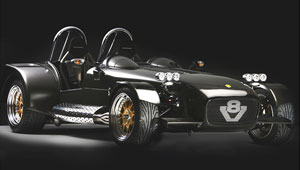 Aside from the occasional Caterham that had been wildly modified for competition use, such as QED’s twin cam engine example from the 1980s, BTB hadn’t had much to do with Caterhams in general, as they were always well resolved for their primary role as sporting road cars. That was until the emerging popularity of trackdays, and particularly the launch of the original track focused R500.
Aside from the occasional Caterham that had been wildly modified for competition use, such as QED’s twin cam engine example from the 1980s, BTB hadn’t had much to do with Caterhams in general, as they were always well resolved for their primary role as sporting road cars. That was until the emerging popularity of trackdays, and particularly the launch of the original track focused R500.
Caterhams had always performed well on the track with the Chapman inspired ethos of added lightness, matched by increasingly high power levels. The R500 with its race tuned K-series engine, was mainly sold with track use in mind. It was about this time though, that noise limits started to be more strictly enforced and the R500 failed to comply with the majority of circuits’ weekday limits.
With the number of enquiries that were being received for silencers specifically for R500s, it was clear to BTB that a robust solution was required. It was also clear that customers did not want to compromise the power output from their engines, or risk damaging their fragile (and expensive) engines by increasing back pressure in the exhaust. After testing a number of possible internal baffle designs within a repackable silencer a tapered megaphone design was chosen that gave the best attenuation with a negligible power deficit. BTB even supplied one of their R500 silencers to the factory demonstrator that allowed it to be used on circuits with the most demanding noise restrictions at the time.
In the year 2000 the Caterham Blackbird became the first officially recognised motorcycle engine Caterham model. Matching Honda’s top of the range CBR1100 superbike engine to Caterham’s lightweight chassis made a very exciting combination. The prototype and first production cars had exhaust manifolds and repackable silencers made by BTB. These were, perhaps surprisingly, mechanically robust cars, a point which was proven by then Honda F1 driver Ricardo Zonta when he gave some memorable passenger rides to Honda guests around the Grand Prix circuit in Estoril.
2008 saw the release of the Caterham Levante, the ultimate incarnation of the motorcycle derived engine package. Twin Yamaha 20 valve cylinder heads on a common crankcase and fed by a Rotrex supercharger and breathing through a bespoke BTB exhaust. Producing 500bhp at over 10,000rpm, this car was all about extreme performance. BTB also fabricated the unique twin rollhoops and sculpted exhaust heatshields that helped give the car a suitably distinctive style.
2010 saw BTB collaborating with the factory in the development of the SP300R, the first Caterham to deviate from the longstanding 7 formula. Common to both the SP300R and the latest 7s are power plants based on Ford’s lightweight Duratec range of engines. Top of the 7 range initially was the CSR 260, featuring a Cosworth tuned 2.3litre Duratec. The first of these that BTB saw, was home built in traditional Caterham style by long time Caterham enthusiast Keith Fletcher. The factory uniquely allowed Keith to assemble his own car, having seen the quality of his previous self builds. Cosworth provided some further upgrades to the engine, which when coupled with BTB’s new equal length 4-2-1 manifold and repackable 7” diameter silencer, exceeded Keith’s expectations. Mapped by Northampton Motorsport and proven on their rolling road Keith’s car could then proudly be proclaimed as a CSR290.
At the same time BTB were helping Palmersport keep their fleet of Caterhams quiet enough for use at their corporate entertainment events. Palmersport’s Bedford Autodrome is a massively popular venue for pushing track cars to their limits in relative safety. It is also one of the country’s most noise sensitive circuits, with continual drive-by monitoring that is directly linked to the local council office that administers the circuit’s license. With the introduction of a new 1600 Ford engined Caterham, BTB designed a unique rear exiting silencer, which solved the noise issue. Repositioning the silencer at the back also made access to the car easier, without having to step over a hot side mounted silencer, which was an added operational benefit.
Caterham owners share a desire for individuality that is reflected in their cars. If you have a unique Caterham that requires a bespoke exhaust solution, BTB have the experience to create an exhaust that matches the quality of your car. Contact us now to discuss your Caterham exhaust requirements.
Download the Caterham Case Study
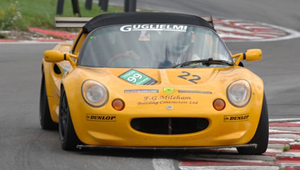 There is something about the Lotus ownership experience that appeals to the innovator.
Nothing symbolises this spirit of ingenuity more than variety of modifications that we
have seen on the Elise range. As well as enhancements to the naturally aspirated Rover
and Toyota engines, there have been turbos or superchargers added or complete swaps to
Honda K20 and VW 1.8T amongst others. In common to all is a desire to experience ultimate
performance in its purest form. However extreme your desires, our engineers can build an
exhaust that matches your requirements and enables you to enjoy the fruits of your labours
on track or on the road.
There is something about the Lotus ownership experience that appeals to the innovator.
Nothing symbolises this spirit of ingenuity more than variety of modifications that we
have seen on the Elise range. As well as enhancements to the naturally aspirated Rover
and Toyota engines, there have been turbos or superchargers added or complete swaps to
Honda K20 and VW 1.8T amongst others. In common to all is a desire to experience ultimate
performance in its purest form. However extreme your desires, our engineers can build an
exhaust that matches your requirements and enables you to enjoy the fruits of your labours
on track or on the road.
Featured is the type of project we love to get involved with -
a very special racing Lotus/VW turbo hybrid with 400 BHP. A very successful racecar - and a
fun, stimulating engineering challenge.
Download the Lotus Case Study
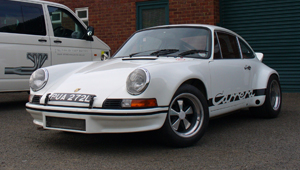 The Porsche 911 is probably the most versatile production based competition car ever devised.
From 2 litre rally cars to twin turbo Le Mans 24 hour cars there is something for everyone.
The unique architecture of the rear engined Porsche means that the exhaust has a key dynamic
role to play in the overall performance of the car.
The Porsche 911 is probably the most versatile production based competition car ever devised.
From 2 litre rally cars to twin turbo Le Mans 24 hour cars there is something for everyone.
The unique architecture of the rear engined Porsche means that the exhaust has a key dynamic
role to play in the overall performance of the car.
Meticulous engineering and careful packaging are paramount to exploiting the potential of
competition Porsches. BTB has the experience. Featured is a Porsche 911 2.8 RSR - sounds rather good...
Download the Porsche Case Study
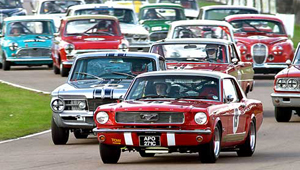 BTB are the preferred supplier to some of the most prolific competition car collectors in the world.
It is essential to these owners that only the best components are used in the preparation of their cars.
It is a privilege to be entrusted with such important historical icons, and we believe it is our
responsibility to ensure that the integrity of their provenance is maintained by continued success.
BTB are the preferred supplier to some of the most prolific competition car collectors in the world.
It is essential to these owners that only the best components are used in the preparation of their cars.
It is a privilege to be entrusted with such important historical icons, and we believe it is our
responsibility to ensure that the integrity of their provenance is maintained by continued success.
Featured are some of our customers racing at the sharp end at the Goodwood Revival meeting.
Download the Race Case Study
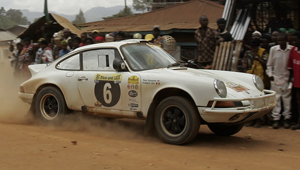 Whether its regularity marathons or the tough terrain of the Classic Safari, the right preparation is vital to
reliability. The exhaust is the most vulnerable part on these cars and it is vital that careful attention is
paid to the routing, mounting and protection of the system to ensure trouble free service. Our customers have
literally driven around the world with our exhausts fitted to some very unlikely rally cars. Everything from Pre War
Chevy's to E-type Jaguars have survived the harshest terrain the world has to offer, whilst their owners enjoy their
extreme motoring adventures.
Whether its regularity marathons or the tough terrain of the Classic Safari, the right preparation is vital to
reliability. The exhaust is the most vulnerable part on these cars and it is vital that careful attention is
paid to the routing, mounting and protection of the system to ensure trouble free service. Our customers have
literally driven around the world with our exhausts fitted to some very unlikely rally cars. Everything from Pre War
Chevy's to E-type Jaguars have survived the harshest terrain the world has to offer, whilst their owners enjoy their
extreme motoring adventures.
Featured is a historic rally Porsche 911 competing successfully on the gruelling Safari Rally.
Download the Rally Case Study
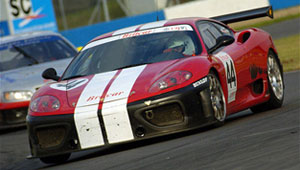 As the world’s most revered exotic sports car brand, it’s inevitable that enthusiastic owners of the marque compete with
their cars right through from club level up to international events. BTB’s first experience of making exhausts for one of
these iconic cars came when they were asked to make a full race system for Mike Millard’s highly modified Boxer in the 1980s.
The challenge of fitting larger bore primaries of equal lengths under the flat 12 engine that was mounted low in the race car’s
chassis was considerable, but once achieved yielded a spectacular sight and sound to behold.
As the world’s most revered exotic sports car brand, it’s inevitable that enthusiastic owners of the marque compete with
their cars right through from club level up to international events. BTB’s first experience of making exhausts for one of
these iconic cars came when they were asked to make a full race system for Mike Millard’s highly modified Boxer in the 1980s.
The challenge of fitting larger bore primaries of equal lengths under the flat 12 engine that was mounted low in the race car’s
chassis was considerable, but once achieved yielded a spectacular sight and sound to behold.
The sheer length between the front and rear cylinders of any of 12 cylinder engine creates problems for the exhaust fabricator.
Ferraris are no exception, and an added factor is to make sure that the aesthetic qualities of the pipes matches the visual theatre
of the beautifully crafted castings that typify the Italian thoroughbred’s engines. The old adage that if it looks right it usually
is right, couldn’t be more true, when you see the finished pipes cascading artfully down each side of the engine compartment.
BTB have been honoured to make exhausts for many versions of the highly prized front engined V12 Ferraris, such as 275GTBs, various
GTOs and also 2 out of only 3 existing 330LMBs, once of which won the prestigious Goodwood Revival Tourist Trophy. Other later rear
engined Le Mans cars such as 330P3, P4 and 512s have benefitted from BTB’s sympathetic recreation of parts to keep these priceless
works of art competing in front of new fans throughout the world.
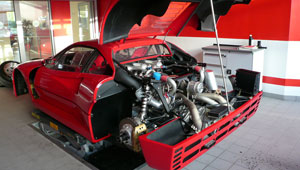 Not all Ferrari’s have 12 cylinders though, and the mainstay of road car production has, for some years been increasingly highly tuned V8s.
Originally mounted transversely in the back of the 308 cars, this layout also makes a true equal length exhaust tricky to resolve. Even
though the flat plane crankshaft design of the Ferrari V8 means that the exhausts can be treated as independant 4 cylinder banks, the
transverse installation means that the rear bank usually has a shorter overall route to take through a transversely mounted rear silencer.
Of course when racing, optimisation is the key, and BTB have designed manifolds and silencer systems for both 308 and 328 derivatives that
give measurable improvements in power and torque, especially when combined with other engine upgrades such as big valve cylinder heads and
uprated camshafts.
Not all Ferrari’s have 12 cylinders though, and the mainstay of road car production has, for some years been increasingly highly tuned V8s.
Originally mounted transversely in the back of the 308 cars, this layout also makes a true equal length exhaust tricky to resolve. Even
though the flat plane crankshaft design of the Ferrari V8 means that the exhausts can be treated as independant 4 cylinder banks, the
transverse installation means that the rear bank usually has a shorter overall route to take through a transversely mounted rear silencer.
Of course when racing, optimisation is the key, and BTB have designed manifolds and silencer systems for both 308 and 328 derivatives that
give measurable improvements in power and torque, especially when combined with other engine upgrades such as big valve cylinder heads and
uprated camshafts.
The exhaust design was significantly simplified with the introduction of the 348 and subsequent 355 models, where the engine is fitted in line
with the chassis, which facilitates a much straighter route to the rear of the car. The new engines also developed a lot more power and at
higher revs, which means that the challenge then became keeping them quiet without restricting performance.
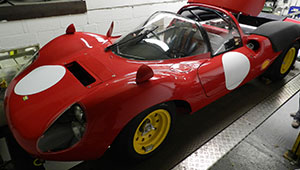 With the increasing reliability of the more modern Ferraris they were becoming ever more popular for use in endurance racing, where the age old
rivalry with Porsche is bitterly fought out on the track. BTB were particulary successful with supplying silencers for various racing versions
of the of the 360. However when one customer wanted to use his 360 Challenge car for track days an unusual problem arose. The race silencers
that BTB fitted, that had previously been used successfully in racing and were more than quiet enough actually on the track, failed to satisfy
the regulation static noise test. Because of the high peak revs attainable by these engines, the static test rpm was 6000rpm, at which point
the variable valve timing resulted in a particular resonance. After much analysis and testing was done by BTB, a tuned quarter wave tube was
introduced to attenuate this frequency. BTB also rerouted the exhaust outlets further away from the air intakes to the engine compartment which
enabled the customer to attend many noise restricted track events without fear of sanction. Other owners have also contacted BTB when aftermarket
exhausts have failed to live up to their expectations of either sound quality, performance or both. Due to the specific nature of their design,
Ferrari engines produce particular harmonics and require careful attention to detail in the design of their exhausts if they’re not to compromise
the expression of their unique character.
With the increasing reliability of the more modern Ferraris they were becoming ever more popular for use in endurance racing, where the age old
rivalry with Porsche is bitterly fought out on the track. BTB were particulary successful with supplying silencers for various racing versions
of the of the 360. However when one customer wanted to use his 360 Challenge car for track days an unusual problem arose. The race silencers
that BTB fitted, that had previously been used successfully in racing and were more than quiet enough actually on the track, failed to satisfy
the regulation static noise test. Because of the high peak revs attainable by these engines, the static test rpm was 6000rpm, at which point
the variable valve timing resulted in a particular resonance. After much analysis and testing was done by BTB, a tuned quarter wave tube was
introduced to attenuate this frequency. BTB also rerouted the exhaust outlets further away from the air intakes to the engine compartment which
enabled the customer to attend many noise restricted track events without fear of sanction. Other owners have also contacted BTB when aftermarket
exhausts have failed to live up to their expectations of either sound quality, performance or both. Due to the specific nature of their design,
Ferrari engines produce particular harmonics and require careful attention to detail in the design of their exhausts if they’re not to compromise
the expression of their unique character.
BTB enjoyed much success in the British GT Championship with exhausts developed for the MTech run 430 GT2, and in various club championships with
production versions of the V8 engined 430. Laterly BTB have worked with leading teams competing with competition versions of the 458.
So if you have a Ferrari, either classic or modern, racing or road, BTB are the place to come for exhausts that will perform and sound as a Ferrari should.
Download the Ferrari Case Study
